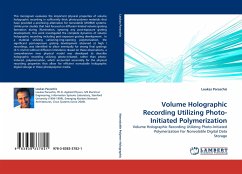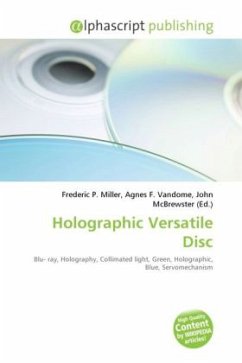
Volume Holographic Recording Utilizing Photo-Initiated Polymerization
Volume Holographic Recording Utilizing Photo-Initiated Polymerization For Nonvolatile Digital Data Storage
Versandkostenfrei!
Versandfertig in 6-10 Tagen
38,99 €
inkl. MwSt.

PAYBACK Punkte
19 °P sammeln!
This monogram evaluates the important physical properties of volume holographic recording in sufficiently thick photo-polymer materials that have provided a promising alternative for nonvolatile (WORM) systems. Unlike prior studies that had focused on diffusion limited volume grating formation during illumination, ignoring any post-exposure grating development, this work investigated the complete dynamics of volume holographic recording including post-exposure grating development . In a material utilizing cationing-ring-opening polymerization, the significant post-exposure grating development ...
This monogram evaluates the important physical properties of volume holographic recording in sufficiently thick photo-polymer materials that have provided a promising alternative for nonvolatile (WORM) systems. Unlike prior studies that had focused on diffusion limited volume grating formation during illumination, ignoring any post-exposure grating development, this work investigated the complete dynamics of volume holographic recording including post-exposure grating development . In a material utilizing cationing-ring-opening polymerization, the significant post-exposure grating development observed at high I recordings, was identified to allow eventually for strong final gratings (3-5 cm/mJ) without diffusion limitations. Based on these observations, a comprehensive new physical model was developed to describe holographic recording utilizing photo-initiated, rather than photo-induced, polymerization, which accounted accurately for the physical recording properties that allow for efficient nonvolatile holographic digital storage in these photopolymer media.












